Paint Spray Hose — Technical Guide for Non-Wire-Core Antistatic Spray Hose (Models 3300-04 & 3300-06)
This article provides a comprehensive technical review of the Paint Spray Hose — a non-wire-core, antistatic hose engineered for the transfer of paints and thinners. The guide covers design principles, materials, detailed specifications, recommended usage, installation and maintenance practices, a comparative analysis with alternative hose types, and practical selection guidance for industrial and commercial spray applications.
Introduction
Hose selection for paint spraying and solvent delivery is critical to performance, safety, and regulatory compliance in coatings operations. The Paint Spray Hose (models 3300-04 and 3300-06) has been developed as a flexible, abrasion- and oil-resistant conduit that dissipates static charge and operates across a wide temperature range (-40°C to 100°C). Because spray processes commonly involve flammable solvents and fine mists, choosing a hose that combines chemical compatibility, mechanical durability, and antistatic properties is essential to minimize ignition risk, reduce downtime, and maintain consistent fluid flow to spray guns and applicators.
Technical Overview
The Paint Spray Hose is a non-wire-core (wireless) construction designed specifically for solvent-borne and water-reducible coatings transfer, spray gun feedlines, and solvent delivery circuits. “Non-wire-core” indicates the hose lacks a continuous metallic helix or internal metal reinforcement; instead, mechanical strength and pressure rating are achieved via high-strength textile reinforcement and engineered elastomer compounds. The antistatic feature is achieved by integrating conductive elements or conductive filler materials in the tube/cover or by incorporating a conductive yarn in the reinforcement layer. When properly installed with conductive fittings and an earth bond, the hose provides a controlled path for electrostatic charge dissipation to ground.
Key functional attributes include:
- Solvent resistance appropriate for paints, solvents, thinners and many coating formulations.
- High flexibility for ease of handling on spray booms, reels, and manual spray operations.
- Antistatic capability to mitigate electrostatic charge accumulation during fluid movement.
- A wide operating temperature range of -40°C to 100°C, enabling cold-weather operations and elevated-temperature solvent handling.
Design and Construction Principles
The hose uses a multilayer elastomeric construction. Typical construction elements are:
- Inner Tube — A solvent- and oil-resistant synthetic rubber (commonly nitrile rubber / NBR or specially formulated NBR blend). This layer is selected for chemical compatibility with aromatic and aliphatic solvents in paints and thinners.
- Reinforcement — One or more textile braided or spiraled layers (high-strength synthetic fibers) to provide burst resistance and working pressure capability. For antistatic function, the reinforcement contains conductive yarns or fibers (carbon-impregnated yarns or stainless-steel filaments in discontinuous form) to create a conductive path within the body.
- Outer Cover — A tough, abrasion-resistant SBR/NBR blend or similar elastomeric compound formulated to resist weathering, mechanical wear, and oil/solvent exposure. Carbon black or conductive additives can be included to enhance antistatic performance.
- No Wire Core — The absence of a continuous metal helix yields improved flexibility, less potential for wire fatigue, and reduced risk of mechanical failures caused by wire corrosion or breakage.
The combined design provides the necessary mechanical and electrical performance while maintaining low mass and high flexibility for spray environments.
Specifications and Dimensions
Below is a consolidated technical specification table for the two available models of the Paint Spray Hose. All numerical values are as provided by the manufacturer data sheet. Where legacy units (Kgf/cm²) are used, common conversions to bar and MPa are supplied for clarity. We recommend confirming these values with the manufacturer before specifying the hose for high-pressure applications.
| Model | Inner Diameter (I.D.) | Outer Diameter (O.D.) | Maximum Working Pressure | Burst Pressure | Minimum Curvature Radius | Weight per Meter | Operating Temperature |
|---|---|---|---|---|---|---|---|
| 3300-04 | 1/4″ (6.35 mm) | 12.4 mm | 420 Kgf/cm² (≈ 41.2 MPa / 412 bar) | 1,300 Kgf/cm² (≈ 127.5 MPa / 1,275 bar) | 60 mm | 140 g/m | -40°C to 100°C |
| 3300-06 | 3/8″ (9.53 mm) | 15.4 mm | 320 Kgf/cm² (≈ 31.4 MPa / 314 bar) | 1,000 Kgf/cm² (≈ 98.1 MPa / 981 bar) | 80 mm | 210 g/m | -40°C to 100°C |
Notes on units and conversions: The data sheet expresses pressures in Kgf/cm² (kilogram-force per square centimeter). Conversion factors used here: 1 Kgf/cm² ≈ 0.0980665 MPa (≈ 0.980665 bar). Because these numbers are large compared with common industry pressure ratings for paint hoses, confirm working- and burst-pressure ratings with the manufacturer and ensure the correct interpretation of units (sometimes data sheets use kgf/cm² or misprinted units). In practical spray applications, working pressures are more commonly given in bar or psi and are typically much lower than those used for high-pressure hydraulic hoses.
Materials and Build Quality
A brief, technical breakdown of materials typically employed in this hose family:
-
Inner Tube — Solvent-Resistant Elastomer (NBR or Specialty NBR Blend)
Nitrile rubber (NBR) is commonly selected for inner tubes where resistance to oils, aromatic solvents, and various resins is required. Optimized NBR blends offer good swelling resistance, acceptable flex life at low temperatures, and stable performance up to about 100°C when formulated correctly.
-
Reinforcement — Textile Braid with Conductive Elements
Multi-ply braided synthetic yarns such as high-tenacity polyester or aramid may be used for mechanical strength. For antistatic performance, conductive yarns (carbon-impregnated polyester yarns, carbon black-filled fibers, or discontinuous stainless filaments) are incorporated to provide a continuous or semi-continuous conductive pathway within the hose wall.
-
Outer Cover — Abrasion-Resistant SBR/NBR Blend
The outer layer is formulated to resist abrasion, ozone, and contact with residual solvents. Carbon black and other fillers are often used to increase wear resistance and provide a degree of static conductivity on the outer surface to minimize charge accumulation.
-
Fittings — Compatible Conductive Couplings Recommended
For antistatic performance, fittings and couplings should be electrically conductive and properly bonded to earth. Typical materials include plated brass, stainless steel, or conductive aluminum alloys, installed using crimp or swage connections that maintain electrical continuity to the hose body.
Build Quality Considerations: Quality of the bonding between tube, reinforcement, and cover layers is critical for longevity under cyclic flexing. Proper vulcanization and thorough bonding prevent internal delamination and blistering when exposed to aggressive solvents. Textile reinforcement must be tension-controlled during braiding to ensure uniform pressure capacity and predictable minimum bend radius. Antistatic yarn placement must be consistent to ensure reliable electrical continuity.
Key Features
- Antistatic Performance: Conductive elements in the hose construction reduce surface resistivity and provide a path to ground when properly connected. This reduces the risk of electrostatic discharge (ESD) during solvent flow and spray operations.
- Non-Wire-Core Design: Wire-free architecture increases flexibility, reduces weight, and minimizes potential hazards associated with wire fatigue or corrosion in continuous-helix hoses.
- Oil and Abrasion Resistance: Engineered elastomer compounds resist swelling, permeation and wear from paints, thinners, and general shop contaminants.
- Wide Temperature Range: Rated for -40°C to 100°C, supporting cold-climate operations and elevated-temperature fluid handling scenarios.
- High Burst and Working Pressure Ratings: Textile reinforcement provides strong burst pressure margins relative to the specified maximum working pressures for robust performance in pressurized delivery circuits.
- Lightweight: Low mass per meter improves handling, reduces stress on robotic arms and reels, and reduces operator fatigue in hand-held spray applications.
- Good Flexibility and Small Bend Radius: Minimum curvature radii (60–80 mm) enable routing through confined spaces and efficient wrapping on reels or spray booms.
Applications and Use Cases
The Paint Spray Hose is engineered for a variety of coating and solvent delivery applications where flexibility, chemical resistance, and antistatic performance are required. Typical use cases include:
- Manual and Automatic Spray Painting: Delivery lines from fluid pumps to spray guns in automotive, aerospace, and general industrial painting stations.
- Spray Booth Feedlines: Hose runs within paint booths, including connections to pump manifolds and mixing rooms.
- Solvent and Thinner Transfer: Short- to medium-length transfer lines for solvent flushing, pump priming, and material recirculation.
- Robotic Spray Arms and Automated Applicators: Flexible feedlines that move with robot arms requiring repeated flex cycles and resistance to solvent exposure.
- Mobile and Field Painting Operations: Portable spray rigs and pressure pot feedlines that require durable, flexible hoses for job-site use.
- Mixing and Dispensing Systems: Connection between dosing pumps, proportioning equipment, and spray guns for solvent-borne coatings.
Note: While the hose offers broad chemical resistance, compatibility should be verified for specific coatings and solvent blends (especially ketones or aggressive esters). Contact the manufacturer for application-specific compatibility tables and recommendations.
Comparison with Other Hose Types
The table below compares the non-wire-core antistatic Paint Spray Hose against common alternatives: wire-reinforced (metal-helix) hose, PTFE-lined hose, and standard PVC solvent hose. Comparison emphasizes key selection parameters relevant to spray and solvent operations.
| Attribute | Paint Spray Hose (Non-Wire-Core, Antistatic) | Wire-Core (Metal Helix) Paint Hose | PTFE-Lined Hose | PVC Solvent Hose |
|---|---|---|---|---|
| Flexibility | High — small bend radius, lightweight | Moderate — less flexible due to helix | Moderate — good chemical resistance but stiffer | High initially; stiffness increases with temperature |
| Antistatic Capability | Yes — integrated conductive elements | Yes — metal helix provides conductivity | Can be configured with conductive lining or wire | Typically no unless specifically manufactured |
| Chemical Resistance | Good for paints, thinners; verify for aggressive solvents | Good; depends on inner tube material | Excellent — PTFE offers broad chemical compatibility | Poor to fair — limited resistance to aromatic solvents |
| Temperature Range | -40°C to 100°C | -30°C to 120°C (varies) | -200°C to +260°C (PTFE itself) — depends on assembly | 0°C to 60°C (typical) |
| Weight | Low — lightweight per meter | Higher — metal helix adds weight | Variable — PTFE adds weight depending on reinforcement | Low |
| Abrasion Resistance | High — specialized covers | Good | Good internal; external cover varies | Poor |
| Cost | Moderate | Moderate–High | High | Low |
| Best Used For | Spray painting, solvent delivery where flexibility and antistatic are needed | Applications requiring conductivity and abrasion resistance, but where stiffness is acceptable | Highly aggressive chemical transfer and critical purity applications | Light-duty solvent transfer, non-critical tasks |
Benefits — Technical Perspective
- Reduced Static Hazard: Antistatic construction minimizes charge accumulation during high-velocity solvent flow or fluid agitation, lowering ignition risk when the hose is properly grounded.
- Superior Handling Characteristics: Low weight and small minimum curvature radii simplify routing, increase operator agility, and reduce stress on reel and robotic systems.
- Durable Against Abrasion and Oil Exposure: Outer cover compounds specifically formulated for mechanical wear extend service life in busy facilities.
- Temperature Versatility: Operational performance across -40°C to 100°C supports both cold-climate fieldwork and heated solvent recirculation systems.
- Maintenance-Friendly: Non-wire-core hoses are less prone to helix fatigue and do not suffer from internal wire unraveling, reducing inspection complexity and unexpected failures.
Limitations and Considerations
- Verify Chemical Compatibility: Although formulated for paints and thinners, very aggressive solvents (strong ketones, chlorinated hydrocarbons, or high-temperature service with particular resins) may require PTFE-lined hoses or specialized elastomers.
- Antistatic Performance Requires Proper Installation: The hose alone does not guarantee ESD safety. Reliable grounding requires conductive fittings, clamps, and station earthing. Regular continuity testing is recommended.
- Pressure Unit Clarification: The provided pressure ratings are in Kgf/cm² (legacy units). Confirm interpretation and conversions with the manufacturer; working pressure selection must follow safety factors for the intended application.
- Not a Replacement for High-Temperature PTFE Hoses: For extremely high-temperature or highly aggressive chemical transfer, PTFE-lined or metal hoses may be more appropriate despite higher cost and stiffness.
- Wear at Abrasion Points: Frequent contact with sharp edges or abrasive surfaces will shorten service life if the outer cover is abraded down to reinforcement; protect hose runs with sleeves or routing guides.
Selection Guidance
When selecting the correct model and hose configuration, consider the following technical factors:
- Fluid Compatibility: Review the chemical composition of paints, solvents and thinners to be used. Consult the hose manufacturer’s chemical compatibility matrix. If the coatings contain strong ketones, high-percentage aromatics, or chlorinated solvents, request compatibility verification or consider PTFE options.
- Operating Pressure and Safety Factor: Match the system’s maximum working pressure to the hose’s rated maximum usage pressure with an appropriate safety margin. Typical industrial practice is to use a factor of safety (e.g., design for ≤ 1/4 to 1/3 of burst pressure), but follow manufacturer recommendations and relevant standards for your industry.
- Temperature Range: Ensure both the hose and attached fittings are rated for anticipated fluid and ambient temperatures, including any elevated temperatures from heated fluids or hot storage environments.
- Length and Routing: Maintain minimum bend radii and avoid excessive kinks or twists. Longer runs may increase pressure drop — calculate hydraulic losses if fluid delivery pressures are critical.
- Electrical Bonding: Specify conductive fittings and a permanent earth bonding method if the hose is used in potentially flammable atmospheres. Verify electrical continuity after assembly and at routine intervals.
- Fitting Compatibility: Use fittings designed for elastomeric hoses (crimp/swage, camlock, quick-disconnect) and ensure the hose end preparation retains both mechanical and electrical continuity.
Installation Best Practices
Proper installation is essential to realize the hose’s performance and safety benefits. Follow these recommended practices:
- Use Conductive Fittings: Install electrically conductive ferrules and couplings that contact the hose outer cover or the embedded conductive yarns to maintain a low-resistance path to the coupling and then to earth.
- Grounding and Bonding: Bond hose assemblies to an approved earth point using braided grounding straps or clamp-type earth connectors. Verify continuity from the hose cover through the fitting to the plant earth (use a multimeter; consult manufacturer for maximum acceptable resistance).
- Respect Minimum Bend Radius: Route hoses so bends exceed the specified minimum curvature radius (60 mm for 3300-04; 80 mm for 3300-06). Excessive bending increases stress and shortens service life.
- Protect from Abrasion and Impact: Where hoses pass over edges or are subject to wear, use abrasion sleeves, protective spiral wraps or conduit runs to minimize cover damage.
- Secure Properly: Avoid unsupported long spans; use clamps and hangers that do not crush the hose. Allow for thermal expansion and movement in dynamic systems.
- Pressure Testing on Assembly: Follow manufacturer guidance for initial pressure tests. A conservative approach is to perform a hydrostatic pressure test at 1.5× the maximum working pressure for a short duration to check for leaks, but always confirm the manufacturer’s recommended test pressures and procedures.
Inspection and Maintenance Guide
A structured inspection and maintenance program prolongs service life and reduces failure risk. The following are recommended professional practices:
Daily / Pre-Use Checks
- Visual inspection for cuts, abrasions, cracks or gouges on the outer cover.
- Verify flexible motion at fittings; check for leaks at crimped or swaged terminations.
- Confirm earthing/bonding connections are in place and show continuity to ground.
- Ensure routing has not changed to produce any new sharp bends or pinch points.
Weekly to Monthly
- Perform a continuity test (resistance measurement) between hose fittings and the plant earth. Record the readings and compare with previous tests to detect degradation in conductive path.
- Check for signs of delamination (bulging or soft spots) indicative of internal bonding failure.
- Clean external surfaces of the hose to remove paint buildup and solvent residues that can hide cover damage.
Annual or Predictive Maintenance
- Pressure leak test according to manufacturer recommendations (hydrostatic or pneumatic as specified). For pneumatic tests, use low pressure and appropriate safety precautions because of stored-energy hazards.
- Replace hoses showing any structural compromise, repeated leaks at crimp joints, or progressive increases in electrical resistance across the hose assembly.
- Review hose routing and support to ensure long-term mechanical integrity. Update hose replacement intervals based on operational duty cycles (flex cycles, solvent exposure, temperature extremes).
End-of-Life Indicators
Replace the hose immediately if any of the following are observed:
- Visible inner tube extrusion or loss of cover integrity.
- Permanent kinks or deformation after normal unloading.
- Cracking or severe abrasion that exposes reinforcement layers.
- Electrical resistance to earth exceeding manufacturer-specified limits or progressive resistance increase over time.
- Persistent leaks at fittings after re-termination attempts.
Safety Considerations and Regulatory Context
Paint spray and solvent transfer systems are subject to safety rules regarding flammable liquids, explosive atmospheres, and static electricity. The following safety considerations apply:
- Electrostatic Hazard Management: Antistatic hoses reduce but do not eliminate static hazards. Systems that handle flammable vapors or create fine mists should be designed per your local electrical and combustible atmosphere regulations (e.g., ATEX in the EU, NEC in the USA) and include grounding, bonding, and possibly inerting or ventilation strategies.
- PPE and Ventilation: Operators should use appropriate respiratory and skin protection for solvent exposure. Adequate ventilation is mandatory in enclosed spray booths or mixing areas.
- Fire Protection: Ensure spray booths and solvent-handling areas are equipped with appropriate fire suppression systems, explosion vents, and safety protocols.
- Documentation and Traceability: Maintain records of hose selection, pressure tests, continuity measurements, and replacement history for audit and safety compliance.
Practical Installation Example
Below is a concise example of how to configure a hose assembly for a typical spray paint feed line:
- Select the model adequate for flow requirements (e.g., 3300-06 for higher flow demand vs. 3300-04 for compact feed lines).
- Choose conductive crimp ferrules and couplings sized to the hose I.D./O.D. Use fittings with a full-contact design to ensure electrical continuity.
- Terminate the hose using the manufacturer’s recommended crimp dimensions and tooling. Ensure a minimum number of crimps and the specified crimp pressure to achieve a leak- and conductivity-proof seal.
- Attach a grounding strap from the coupling body to plant earth. If multiple hose assemblies feed into a manifold, bond the manifold to earth and confirm continuity at each junction.
- Route the hose maintaining minimum bend radius, protect high-wear zones with abrasion sleeves, and support the hose to avoid unsupported spans greater than recommended.
- Conduct a continuity test and a pressure test according to the manufacturer’s guidance before putting the hose into service.
Frequently Asked Technical Questions
1. How should I verify the antistatic property of the hose after installation?
Measure electrical resistance from fitting to earth using a suitably rated megohmmeter or low-resistance ohmmeter as recommended by the hose manufacturer. Acceptable resistance thresholds will be specified by the manufacturer (commonly in the low megaohms to kiloohms range depending on design). Record baseline values and retest periodically.
2. Can the hose be used for all solvent-based paints?
The hose is intended for paint and thinner transfer, but solvent compatibility depends on the specific chemical formulation. Consult the manufacturer’s chemical compatibility guide and test if uncertainty exists. For highly aggressive chemicals or prolonged exposure, consider PTFE-lined hoses.
3. Is the hose suitable for vacuum application?
Non-wire-core hoses typically have reasonable vacuum capability depending on reinforcement and wall stiffness. Verify vacuum ratings with the manufacturer — for higher vacuum levels, confirm that hose collapse resistance meets requirements or consider a wire-reinforced or suction-rated construction.
Conclusion
The Paint Spray Hose (models 3300-04 and 3300-06) is a purpose-built, non-wire-core, antistatic solution for spray painting and solvent transfer applications. Its combination of solvent resistance, abrasion-tough outer covers, small bend radius, lightweight construction, and an integrated conductive path for static dissipation makes it a practical choice for many industrial and commercial coatings operations. Proper selection, installation with conductive fittings and grounding, and an appropriate maintenance and inspection program are essential to realize the safety and performance benefits of this hose family. For application-specific compatibility (chemical, pressure and temperature), installation details, and certified testing and safety documentation, contact the hose manufacturer or a qualified distributor.
If you need assistance selecting the correct model for a particular coating system, calculating pressure drop for a specified length and flow rate, or preparing an installation checklist to meet regulatory requirements, provide your fluid composition, flow rate, maximum system pressure, ambient/operating temperatures, and mounting constraints — and we will help with a tailored recommendation.

 Tiếng Việt
Tiếng Việt
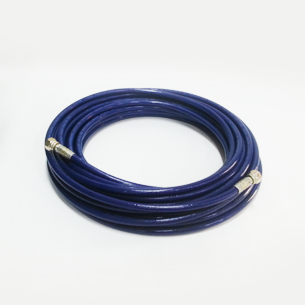
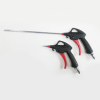
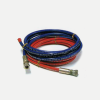
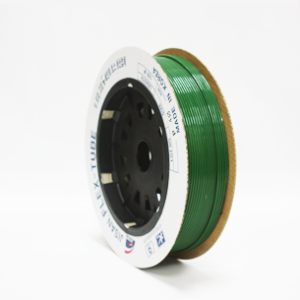
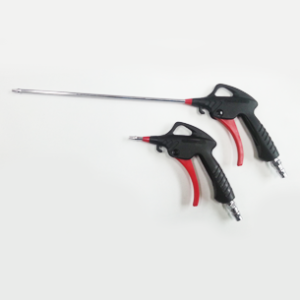
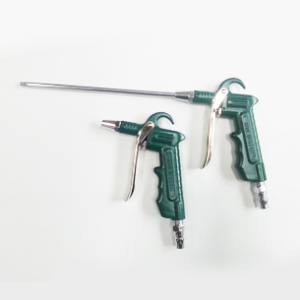
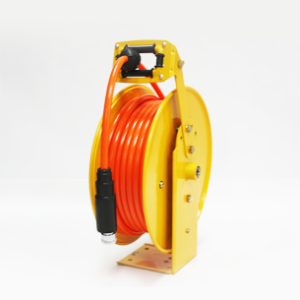
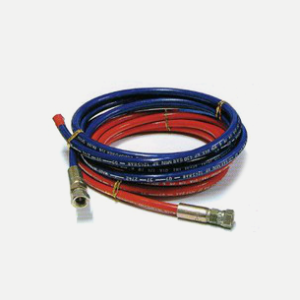
Reviews
There are no reviews yet.